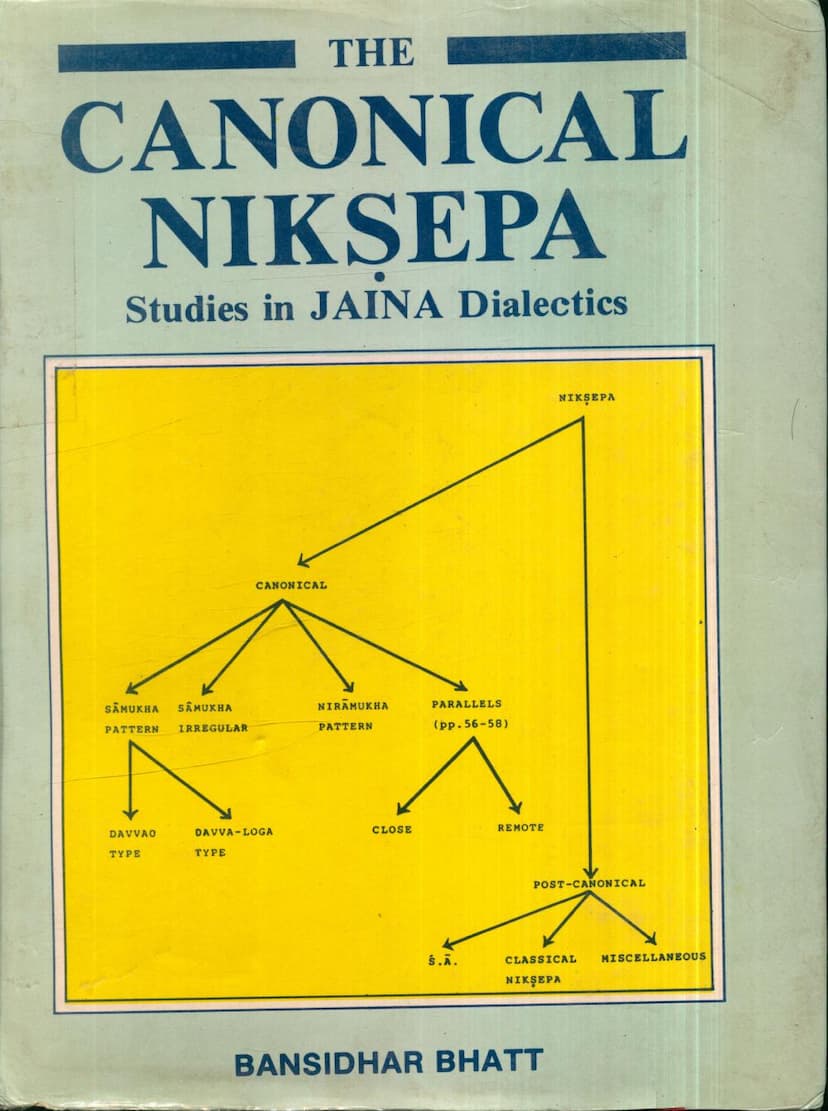Canonical Niksepa
Added to library: September 1, 2025

Summary
Here's a comprehensive summary of "The Canonical Nikṣepa: Studies in Jaina Dialectics" by Bansidhar Bhatt, based on the provided text:
Overall Purpose and Significance:
"The Canonical Nikṣepa" by Bansidhar Bhatt is a seminal work that systematically analyzes a unique dialectical technique known as the nikṣepa as it appears within the canonical literature of the Svetambara Jains. While the nikṣepa is more fully developed and explicitly named in post-canonical Jain texts, Bhatt's groundbreaking study focuses on its earlier, often less explicitly defined, manifestations within the foundational canonical scriptures. The book aims to bring to light and provide a framework for understanding this complex and peculiar aspect of Jaina scholastic methodology.
Key Concepts and Distinctions:
- Nikṣepa: A dialectical technique characterized by the systematic analysis of a concept or subject through a set of predetermined "determinants" or categories. This method is employed to explore the multifaceted nature of reality and knowledge within Jaina philosophy.
- Canonical vs. Post-Canonical Nikṣepa: Bhatt distinguishes between the canonical nikṣepa (found in the early Jain scriptures) and the post-canonical nikṣepa (found in later commentaries and treatises). While the latter is more self-aware, named, and discussed as a technique, the former represents its origins and earlier forms.
- Samukha vs. Niramukha: Bhatt categorizes canonical nikṣepas into two main forms:
- Samukha: These nikṣepas are characterized by an introductory section, termed "Āmukha" or "programme," which sets the stage for the subsequent analysis. They are further divided into the davvao type and the davva-loga type based on their structural and phraseological characteristics.
- Niramukha: These nikṣepas lack a formal introduction or "programme." They are typically direct question-and-answer exchanges where the presence of two or more standard determinants is the defining feature.
- Determinants: The core categories used for analysis in a nikṣepa. The primary determinants identified are:
- Dravya (substance)
- Kṣetra (space/location)
- Kāla (time)
- Bhāva (state/quality/non-physical nature)
- Other determinants like guna (quality) also appear.
- Catch-word: The central concept or subject being analyzed, usually presented in capital letters.
- Parallels: Passages from canonical or other literature that share structural similarities with nikṣepas but may not fully conform to the defined types. Bhatt distinguishes between "close" and "remote" parallels.
- Elements, Styles, and Patterns: Bhatt also identifies broader dialectical patterns and stylistic features, such as the "Āmukha style" and the "Bhangi style," which are related to but distinct from the nikṣepa itself.
Methodology and Structure of the Book:
The book employs a rigorous philological and analytical approach. It systematically identifies and catalogues instances of nikṣepas within key canonical works like the Bhagavatī, Jīvābhigama, and Prajñāpanā. The methodology involves:
- Cataloguing: Creating comprehensive lists of nikṣepas found in the canonical texts, distinguishing between samukha and niramukha types, and further classifying the samukha type into davvao and davva-loga.
- Analysis: Providing detailed examinations of individual nikṣepa instances, including their textual context, the "catch-words" and "determinants" used, and the logical structure of the analysis.
- Documentation: Presenting extensive "Entries" for significant nikṣepa examples, often including parallel passages and detailed notes on terminology, grammar, and historical context.
- Classification: Developing a system for categorizing the various forms and subtypes of canonical nikṣepas, often introducing new terminology to describe the observed patterns.
- Historical Context: situating the canonical nikṣepa within the broader development of Jaina dialectics and its relationship to post-canonical literature.
Key Findings and Contributions:
- Identification of Canonical Nikṣepa Forms: Bhatt meticulously identifies and categorizes the earliest forms of the nikṣepa within the Svetambara canon, showing their structural and conceptual precursors to later developments.
- Systematic Analysis of Determinants: The book provides an invaluable inventory and analysis of how determinants like dravya, kṣetra, kāla, and bhāva were systematically applied to explore various concepts.
- Detailed Documentation: The "Entries" section offers meticulously transcribed and analyzed examples, serving as a crucial resource for future research on Jaina dialectics.
- Insights into Jaina Dialectics: The study illuminates the logical and rhetorical strategies employed by Jaina thinkers to articulate their complex philosophical views, revealing the sophisticated nature of their intellectual tradition.
- Interrelation of Texts: Bhatt highlights the relationships and textual borrowings between different canonical works, such as the transmission of the jñāna-pentad from Nandi to the Bhagavatī.
- Laying the Groundwork: The book provides a foundational understanding of the canonical nikṣepa, paving the way for further research into its evolution and its connection to other Indian dialectical traditions.
Scholarly Reception:
The book has been highly praised by leading Indologists for its originality, extensive scholarship, meticulous analysis, and the stimulus it provides for further research in the field of Jaina dialectics and scholasticism. Scholars have commended Bhatt's ability to navigate the complex textual material and provide clear orientation in a previously less understood area of Indology.
In essence, Bansidhar Bhatt's "The Canonical Nikṣepa" is a monumental contribution to Jaina studies, offering a deep and systematic exploration of a fundamental, yet often overlooked, dialectical tool that shaped the articulation of Jaina philosophical thought in its earliest canonical expressions.